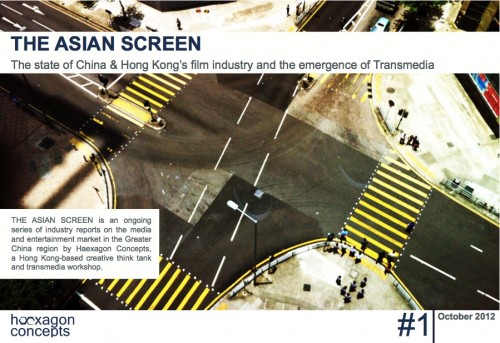Stats on the commerce of film in Hong Kong & China

Haexagon Concepts has just released their industry report on the film industries in Hong Kong & China. It’s a snappy, well-researched report, and tackles subjects ranging from advertising methods to the emergence of transmedia storytelling in these two regions.
An excerpt about Hong Kong’s advertising quagmire:
“A major problem in HongKong is that there aren’t enoughadvertising platforms to makerates competitive. In Hong Kong,there are only two free-to-air television stations (broadband/cable television networks onlyreach about one million viewers,mainly relying on subscribers for their revenue) and two commercialradio networks (each networkoperates multiple stations). Inother words, the company thatcan afford to pay the most for ad space will dominate the city,making local productions buy upmore space to try and compete with bigger, foreign competition(hence inating budgets anddriving advertising prices up).”
An excerpt about China’s foreign film import limits:
As China becomes an increasingly lucrative market for films, foreign film companies will undoubtedly want a piece of the pie. However, as foreign films are still limited by the imported films quota (recently expanded after negotiations with America’s MPAA), foreign investors are now looking to doing co-productions with Chinese investors to get around the quota. In addition to most Hong Kong films of recent years, “The Expendables 2”, “Iron Man 3”, “Looper” and “The Karate Kid” are all examples of recent American-Chinese co-productions…
SARFT quickly picked up on this practice and vowed in August 2012 to strictly enforce co-production terms, demanding that films include Chinese locations, Chinese actors, and a story that “incorporates Chinese themes”. “Expendables 2” was the first casualty, having its co-production status removed despite a hefty investment by LeVision Pictures. “”Looper” was suddenly pulled from its release date with no official reason and abruptly returned to its original release date two days before it (The opening “dragon logo” stated that it is now classified as an imported film). The announcement even sent a shockwave among Hong Kong filmmakers, who had to go to Beijing for an emergency meeting with SARFT.